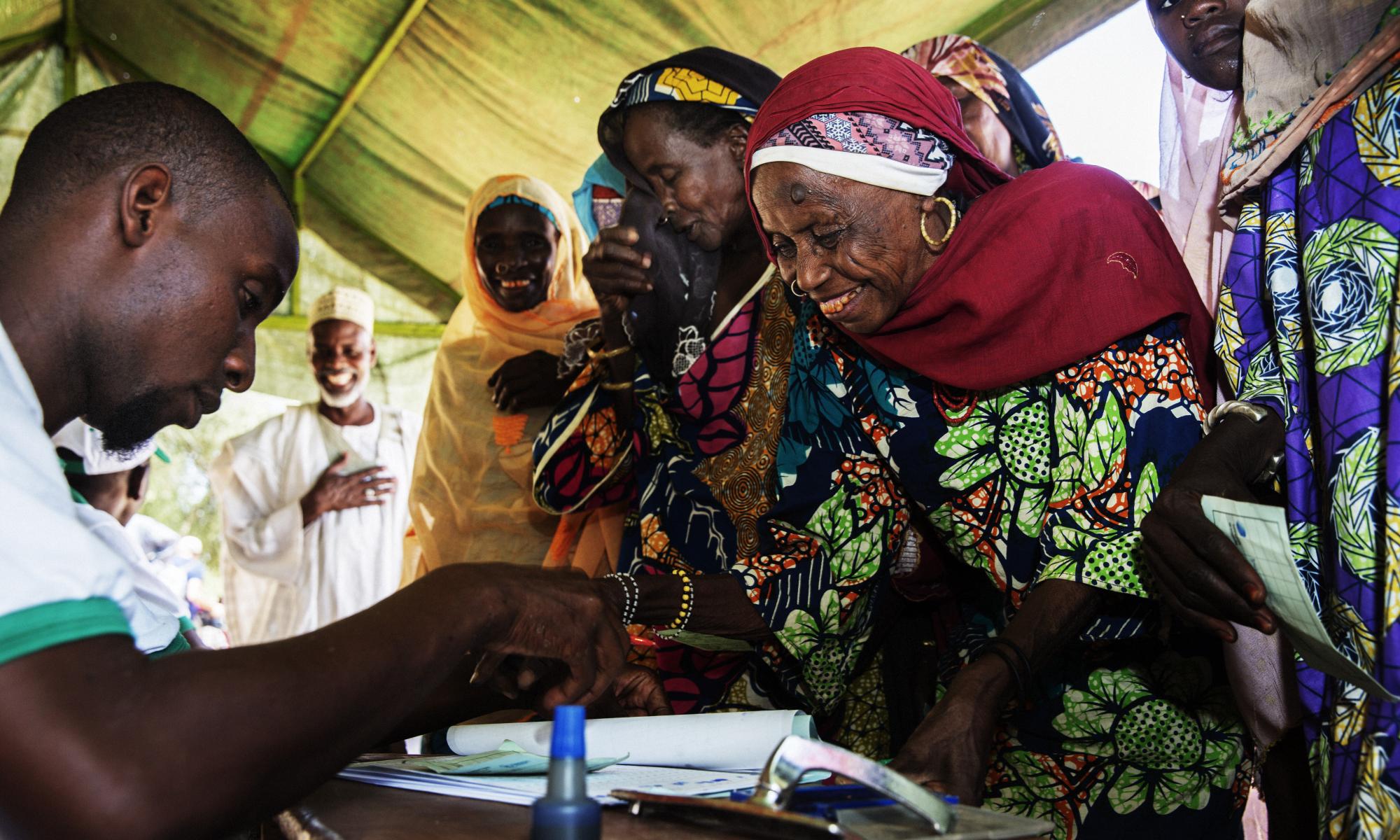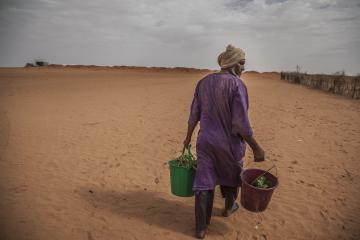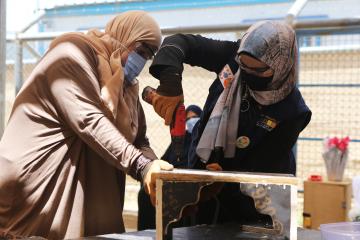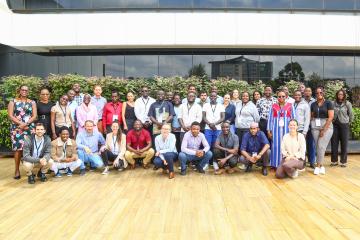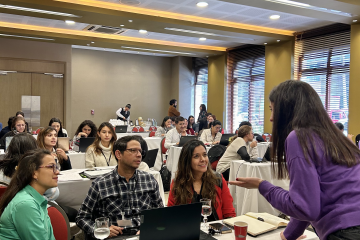
Cash and voucher assistance helps people affected by crisis meet their basic needs and improve food security.

As global needs rise and resources are stretched, cash and voucher assistance should remain a core tool for humanitarian response. Cash and vouchers help households meet urgent basic needs.
How aid is delivered should be guided by local conditions and program goals. Cash transfers are often preferred by families, cheaper to deliver, and more cost-effective than vouchers. In turn, vouchers are more cost-effective than distributing goods directly. Still, there are contexts where vouchers or in-kind assistance may be more appropriate—for example, when programs want to boost access to certain goods or operate in areas with limited or unreliable markets.
Further innovation and testing can improve program design and effectiveness. The evidence is clear that cash and voucher assistance improves food security, but more research is needed to improve targeting, delivery, and effectiveness across different crisis settings and outcomes, including mental health, education, and economic resilience.
Over 300 million people are currently in need of humanitarian assistance, driven by a record number of armed conflicts and weather-related disasters. However, funding has not kept pace with escalating needs—a problem that will worsen as funding cuts go into effect—leaving people at risk of starvation, violence, disease, and more. In response, humanitarian organizations are looking for more cost-effective and flexible approaches to deliver assistance, increasingly turning to cash transfers or vouchers that people can redeem at different vendors.
Cash and voucher assistance reduces families’ food insecurity during humanitarian crises. Across diverse crisis settings, from Afghanistan to Niger, cash and voucher assistance improves households' food security by helping families eat more often and eat a wider variety of foods.
Cash gives families the power to decide what they need most. Where markets are functioning, cash offers people maximum flexibility relative to vouchers or in-kind assistance like food parcels, and evidence shows families use cash wisely. In the Democratic Republic of Congo, for example, recipients used their cash transfers on more diverse food and non-food items than voucher recipients, including health expenses, school fees, and debt reimbursements.
Cash can improve more aspects of people’s lives in humanitarian settings. Emerging evidence suggests that cash can also improve mental well-being and economic stability. For example, in Afghanistan, women who received a cash transfer were happier and felt better about their economic situation. In Niger, women who received mobile cash transfers, compared to physical cash, were more likely to travel to markets, sell household grains, and spend more on children’s clothing. These findings point to the broader potential of cash to improve outcomes beyond food security, building on substantial evidence showing cash transfers improve people’s well-being in a range of non-crisis settings. However, more research is needed to better understand how programs impact outcomes like health, education, social cohesion, and women’s empowerment in humanitarian settings.
Cost and design considerations
Cash and voucher assistance often achieves similar or better outcomes than in-kind aid, at a lower cost. Cash transfers are more cost-effective than vouchers and cost less to deliver. Vouchers are, in turn, more cost-effective than in-kind aid. In Yemen, delivering cash cost less than distributing food, though both improved food security. In the Democratic Republic of Congo, cash transfers were more cost-effective than vouchers, leading to comparable impacts on food consumption and household well-being. However, in Ecuador, the relative cost-effectiveness of cash versus vouchers varied by outcome. They both helped families consume more, but vouchers better improved families’ dietary diversity and calorie intake—though families preferred cash. Food aid was the least cost-effective way to help families eat more or eat a wider variety of foods, but families still preferred food aid over vouchers. More research is needed on blended delivery models—such as “cash plus,” which provide not only cash but also access to health care, education, skills training, or other services and goods.
Mobile cash transfers can further lower costs and increase flexibility for beneficiaries. In Niger, the per-transfer cost for mobile payments was about twenty percent lower than delivering cash in person, and helped families eat more diverse diets. It also saved people time: mobile transfer recipients avoided long trips and waits at distribution centers, gaining back about twenty hours over five months. In Afghanistan, sending US$1 to beneficiaries’ mobile phones cost 6.7 cents, less than half of the 17 cents per dollar it cost the World Food Programme to deliver physical cash. Once phones and mobile money agents are in place, mobile transfers could be a simple, affordable way to reach people in crisis.
How aid is delivered, and in what context, can influence program impact. Cash, vouchers, or in-kind assistance may each be better at shifting certain outcomes than others, depending on the goals of the program. For example, in Ecuador and Yemen, cash and vouchers improved dietary diversity more than food aid, but food assistance led to greater calorie intake. The type of crisis, local market conditions, implementation costs, and more can all influence the appropriateness and effectiveness of different methods of delivering aid. Where local markets are functioning and accessible, cash transfers give people the flexibility to meet their most pressing needs. Vouchers may be more appropriate when some market access exists, but programs want to direct spending toward specific goods to meet particular health or nutrition goals, like dietary diversity. In-kind aid may be more appropriate if markets are limited or not functioning (e.g. if markets are temporarily destroyed or inaccessible after a flood), though it is often more costly to deliver.
Cash and voucher assistance often achieves similar or better outcomes than in-kind aid, at a lower cost.
Implementing partners
Implementers bring deep local knowledge, technical expertise, and a commitment to evaluation and learning as they bring these programs to life. These include the following (listed in alphabetical order); this list is not exhaustive.
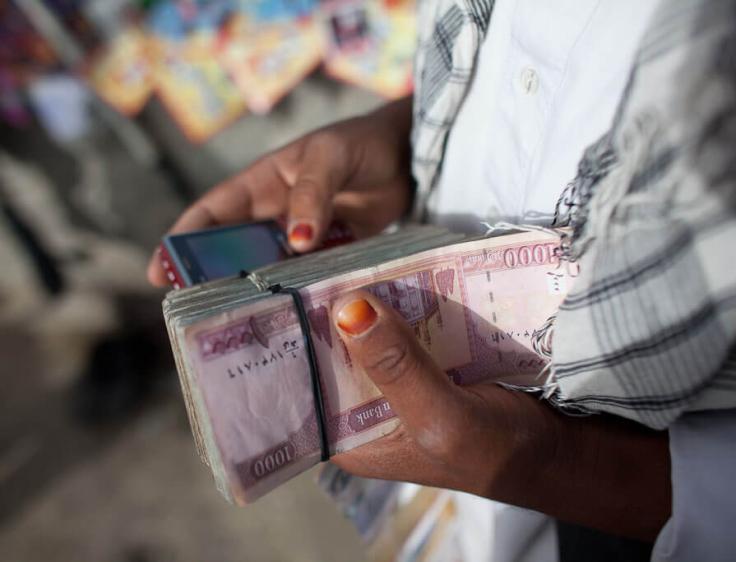
The role of foreign assistance and philanthropy
Foreign assistance and philanthropy play a critical role in driving innovation and evidence generation in humanitarian response. Strategic investments from donors can help answer pressing questions about how to deliver aid more effectively. For example, the UK Foreign, Commonwealth and Development Office, through J-PAL’s Crime and Violence Initiative, supported researchers in evaluating the impact of digital aid payments in Afghanistan. The cost-effective program improved beneficiaries’ food security and mental well-being. Further, the program showed no evidence of funds being diverted to unintended groups. Based on these findings, the World Food Programme is currently scaling digital aid payments to 100,000 vulnerable households in Afghanistan.
Discover more from J-PAL
Discover more from other sources
Why is cash assistance a critical form of humanitarian aid?
International Rescue Committee
What do we know about cash and in-kind transfers in humanitarian settings? Not enough
World Bank and World Food Programme
Cash assistance gives refugees the power of choice
The UN Refugee Agency
Cash and In-Kind Transfers in Humanitarian Settings: A Review of Evidence and Knowledge Gaps
World Food Programme
Photos:
(1) Credit: ©WFP, Tim Dirven (supported by the EU)
(2) Credit: Jan Chipcase, CC BY-SA 3.0, via Wikimedia Commons
